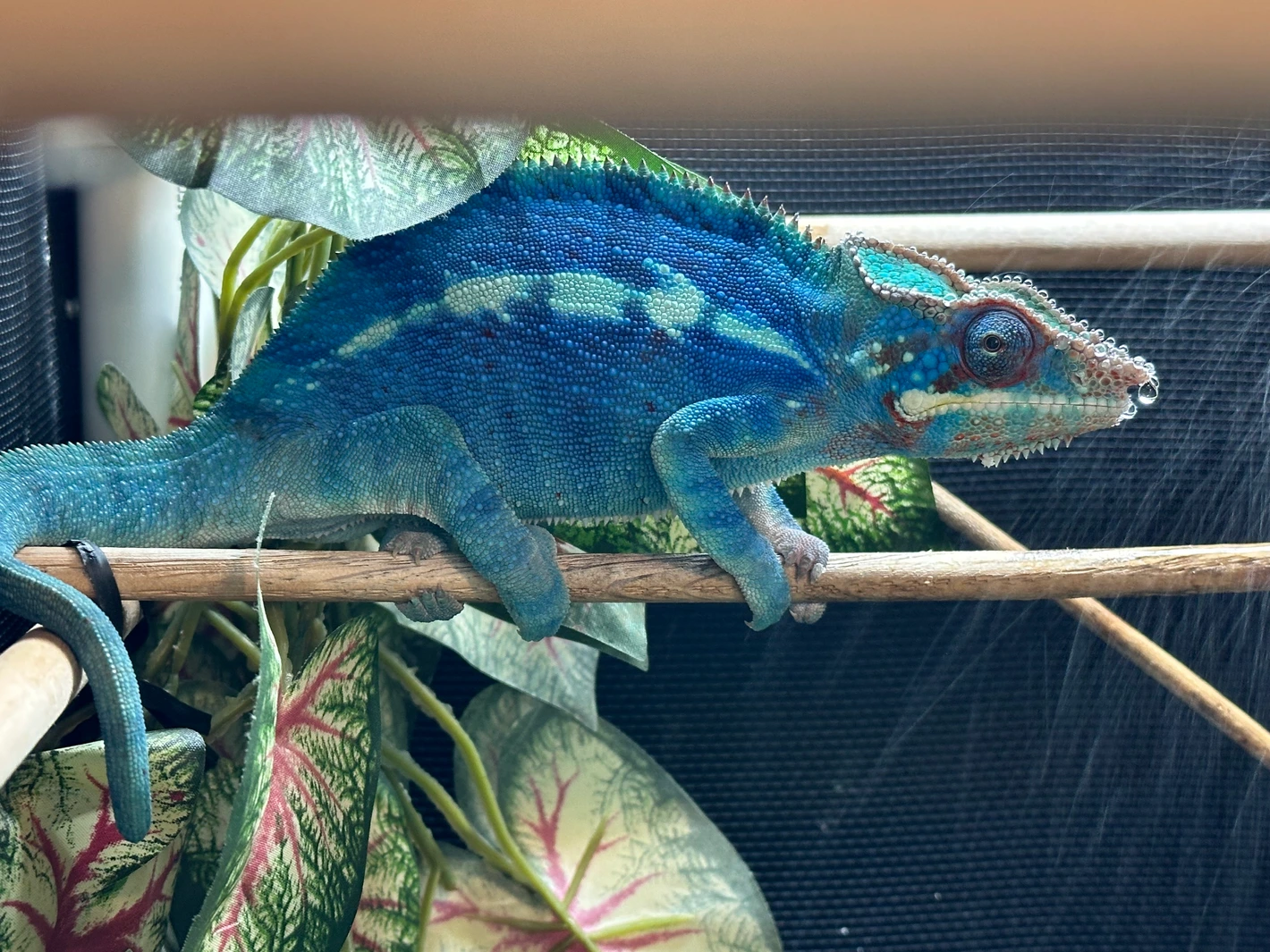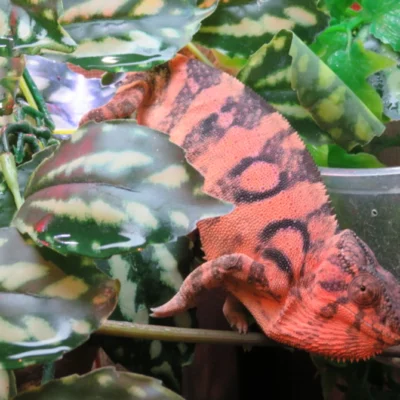Buy subadult chameleon online
. The subadult stage in chameleons is a critical transitional phase—where juveniles begin to show adult traits but aren’t yet sexually mature. It’s the sweet spot for shaping temperament, dialing in husbandry, and preparing for breeding or display. Here’s a detailed breakdown tailored to your level:
🦎 What Is a Subadult Chameleon?
| Stage | Age Range | Size Estimate | Key Traits |
|---|---|---|---|
| Hatchling | 0–2 months | 3–4 inches | Fragile, rapid growth |
| Juvenile | 2–6 months | 6–10 inches | Developing appetite and color |
| Subadult | 6–12 months | 10–16 inches | Near-adult size, early sexual traits |
| Adult | 12+ months | 14–24 inches (species-dependent) | Fully mature, breedable |
Subadults are often referred to as “teenagers”—they’re past the fragile stage but still growing and refining their coloration, behavior, and skeletal structure.
🧬 Species-Specific Subadult Traits
- Panther Chameleons (Furcifer pardalis):
- Males show early barring and locale coloration
- Females begin to show receptive or gravid coloration
- Size: ~10–14 inches
- Popular morphs: Ambilobe, Nosy Be, Sambava
- Veiled Chameleons (Chamaeleo calyptratus):
- Males develop casque and throat flap
- Females begin to show egg development signs
- Size: ~12–16 inches
- Jackson’s Chameleons (Trioceros jacksonii):
- Males develop horns
- Cooler temps and higher humidity needed
- Size: ~8–12 inches
- Parson’s Chameleons (Calumma parsonii):
- Still slow-growing at this stage
- Coloration begins to intensify
- Size: ~10–14 inches
- Buy subadult chameleon online
🏡 Husbandry for Subadults
- Enclosure Size:
- Minimum: 18x18x36 in
- Upgrade to adult size by 10–12 months
- Lighting:
- T5 HO UVB (Arcadia 6% or Zoo Med Reptisun)
- Basking bulb with temp gradient
- Temps & Humidity:
- Basking: 85–90°F (29–32°C)
- Ambient: 75–80°F (24–27°C)
- Night: 65–70°F (18–21°C)
- Humidity: 60–80% (species-dependent)
- Feeding:
- Daily feeding of gut-loaded crickets, roaches, BSFL, silkworms
- Calcium (no D3): 3x/week
- Multivitamin with D3: 2x/month
- Bee pollen: every feeding
Subadults need high protein, hydration, and UVB exposure to support skeletal growth and organ development.
🧠 Behavior & Socialization
- Temperament:
- Curious but territorial
- Males may begin displaying dominance
- Females may show early receptive or gravid signals
- Handling:
- Keep minimal—stress can stunt growth
- Focus on visual interaction and slow acclimation
- Housing:
- Always solo unless breeding






Reviews
Clear filtersThere are no reviews yet.